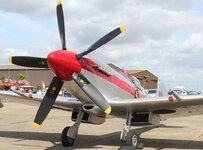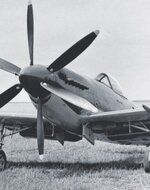Shortround6
Lieutenant General
Fighter or dogfighter?
Ki-43 was one of the absolute best dog fighters up until the end of the war, Problem was the Allies weren't dogfighting anymore, at least in low speed, tight turn way. The Ki-43 could not force the 1944-45 Allied fighters to fight it. They could leave/ignore it and come back later.
The 190 was better able to force the fight. But maybe not by 'dogfighting'.
Ki-43 was one of the absolute best dog fighters up until the end of the war, Problem was the Allies weren't dogfighting anymore, at least in low speed, tight turn way. The Ki-43 could not force the 1944-45 Allied fighters to fight it. They could leave/ignore it and come back later.
The 190 was better able to force the fight. But maybe not by 'dogfighting'.


